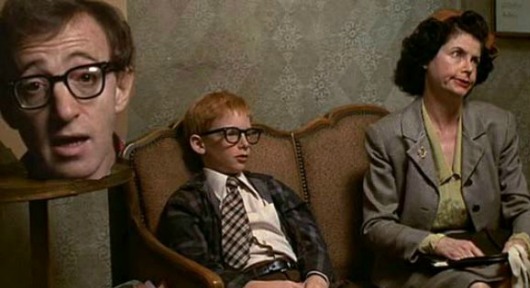And it's one of the main reasons for a screenplay to get tossed instead of read ?
One of the 13 rules to write original dialogues talks about the use of dialogue techniques.
Today, the juxtaposition technique.
How it works, and when to use it.

Whatascript interviews a juxtaposition expert to get to the bottom of this movie dialogue technique.
Meet Alvy Singer, the main character of Annie Hall, screenplay written by Woody Allen and Marshall Brickman.
Whatascript!:
Mr Singer, what is your relationship to movie dialogue technique?
Alvy Singer:
I'm obsessed with-with, uh, with death, and movie dialogue techniques I think. Big subjects with me, yeah.
Whatascript!:
Mr Singer, this juxtaposition movie dialogue technique, how does it work?
Alvy Singer:
Well, it goes like this. You-you take a sentence, uh, and-and-and you take another one, that-that is completely unrelated, and, uh, you put them together.
Whatascript!:
And the purpose of this technique is?
Alvy Singer:
To surprise and cause a-a funny contrast.
Whatascript!:
Can you give us an example?
Alvy Singer:
If I-I take the sentence, uh,"I'm not-I'm not a morose type. I'm not a depressive character. I-I-I, uh, you know, I was a reasonably happy kid, I guess." There-there is nothing special about that, right?
If I-I then take the sentence " I-I was brought up in Brooklyn during World War II", there-there is nothing funny about that either. But, if-if I put them to-together, bingo! You-you're left surprised.
ALVY ... And it's funny, I'm not-I'm not a morose type. I'm not a depressive character. I-I-I, uh, (Laughing) you know, I was a reasonably happy kid, I guess. I was brought up in Brooklyn during World War II.
Whatascript!:
Can you give us another example of how you use this dialogue technique?
Alvy Singer:
There-there is this moment with Annie - we-we just saw this-this wonderful film, "The Sorrow and the Pity" about the German occupation in France and-and I say:
ALVY Boy, those guys in the French Resistance were really brave, you know? Got to listen to Maurice Chevalier sing so much.
Whatascript!:
Can you create the same juxtaposition effect with one word instead of a sentence?
Alvy Singer:
Sure. I-I'm with Annie and we-we stand in line in the movie theater. And-and-and there is-there is this guy, uh, you know, so full of himself, and, he pontificates, he-he talks, uh, all the time to-to impress his new girlfriend.
And-and he's spitting on my neck when he talks. And-and he talks about the-the last Fellini film, that-that it lacks a cohesive structure, and-and I-I listen and I'm-I'm-I'm gonna have a stroke.
So I-I say to Annie talking about him, and this-this last word is the juxtaposition part we-we're talking about:
ALVY Probably met by answering an ad in the New York Review of Books. "Thirtyish academic wishes to meet woman who's interested in Mozart, James Joyce and sodomy."
Whatascript!:
One last example?
Alvy Singer:
I've-I've just met Annie and we-we talk about my analyst. And-and I-I say that I see him for fifteen years. And-and Annie is surprised, so, uh, she says: "Fifteen years?". So I say, and-and again this-this is the juxtaposition part:
ALVY Yeah, uh, I'm gonna give him one more year and then I'm goin' to Lourdes.


You may not realize it but by taking this simple action you
empower us to write more articles like that - one Comment/Like/Share at a time.
Thanks for that.
Picture and screenplay extracts:
-- "Annie Hall" - Diane Keaton, Woody Allen, Gordon Willis (cinematography), Woody Allen (director), Woody Allen and Marshall Brickman (screenplay)
Go from Juxtaposition Movie Dialogue Technique to Whatascript! Home page
* Avatar, screenplay written by James Cameron